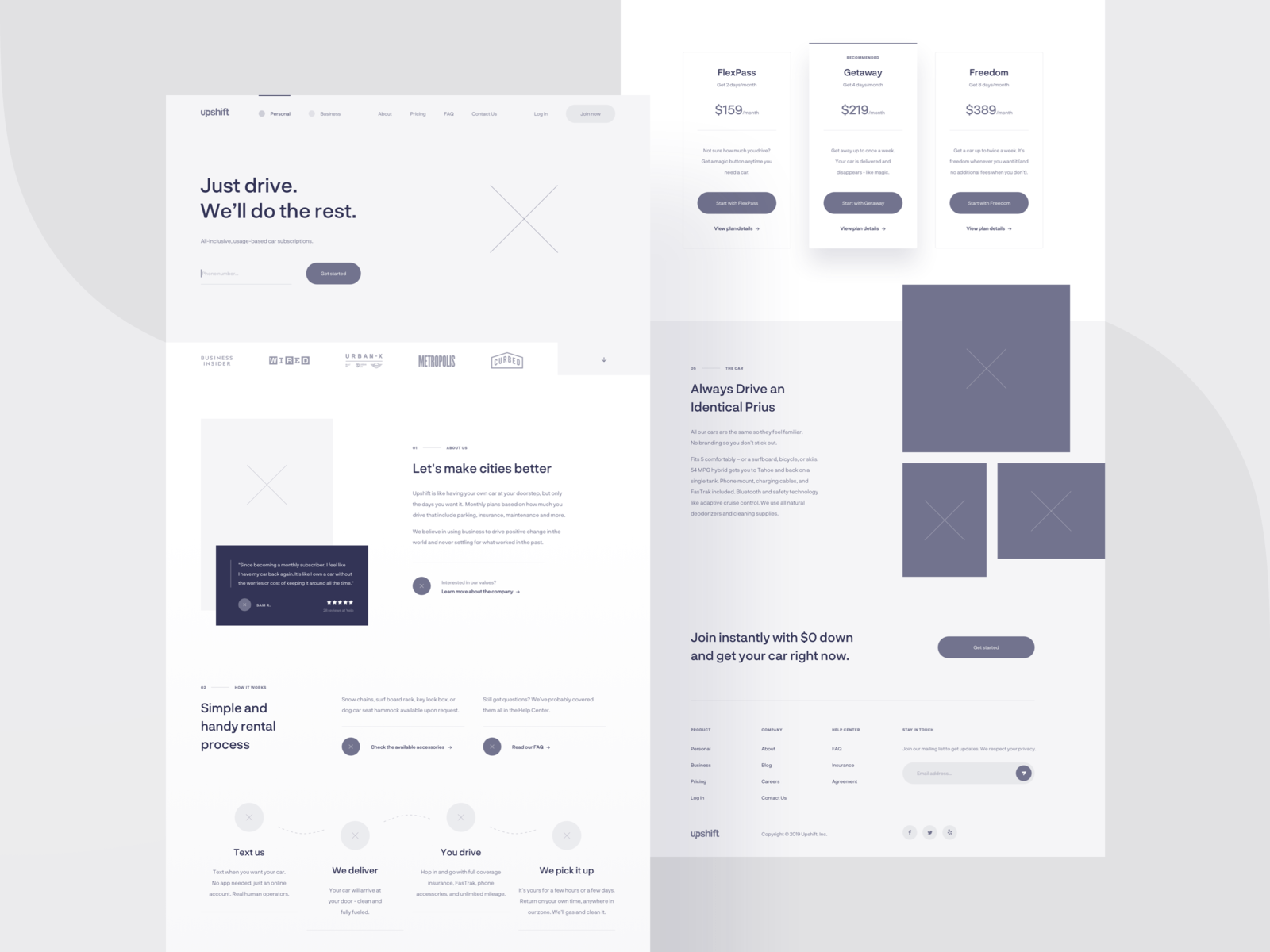If you’re just launching a website or looking to optimize an existing one, there are certain things that you should and shouldn’t be doing when it comes to design. With the right guidance, your site can look professional, load faster, and perform better than ever – after all, first impressions count! Dreamhost’s comprehensive guide will walk you through some of the essential dos and don’ts of designing your website so that it looks modern and professional for today’s audiences. No matter if you have years of coding experience or are new to web development entirely – these tips will help ensure that visitors always crave more from your page.
DO Create a Website With a Well-Defined Purpose and Audience
Designing a website can be an exciting adventure, but creating a successful website requires more than just visual appeal. A website needs to have a clear and well-defined purpose and audience to effectively reach its intended goals. The purpose of the website should be grounded in what value it provides to its visitors or how it can address their needs. The intended audience of the website represents the group of people that the website will cater to. Understanding the audience will help you create content that resonates with them, making the website more engaging and informative to visitors. By combining a well-defined purpose with an understanding of the audience, you can create a website that truly connects with and delivers value to your target audience.
DON’T Overload the Site
When it comes to designing a website, it’s important to strike a balance between aesthetics and functionality. While graphics and other elements can enhance the visual appeal of your site, overloading it with too many of them can be overwhelming and distracting for users. Plus, it can slow down your website’s loading time, which is a major turn-off for visitors. To ensure a positive user experience, it’s important to focus on creating a clean, streamlined design with just the right amount of elements and graphics to achieve your desired look and feel. Remember, sometimes less is more!
DO Focus on UX and Accessibility
Designing a website can be a daunting task, especially if you’re not sure where to start. But putting the user experience and accessibility at the forefront will make all the difference. Think about who will be using your website and what information they will be looking for. Make sure the site is easy to navigate and that the design is visually appealing but not overwhelming. Also, consider accessibility features like alt text for images and captioning for videos. These small touches can make a big difference in making your website inclusive for all users. With a focus on user experience and accessibility, your website will not only look great but also be functional for everyone who visits.
DON’T Overlook Basic Design Principles
When it comes to designing a website, it’s easy to get caught up in the aesthetics and forget about the basic design principles that make a website truly great. Branding is essential to any website, as it should be consistent with your overall brand identity. Color psychology also plays a crucial role in establishing a mood or tone for your website, and the colors you choose should reflect your brand and business goals. Additionally, font selection is important for readability and setting the tone of your content. A website that incorporates all of these elements effectively will not only look great but also draw in and engage its audience. So, don’t overlook the basics when designing your website – they can make all the difference in creating a successful online presence.
DO Use High-Quality Images
When it comes to designing a website, images are a crucial component that can make or break your website’s aesthetics. High-quality images can improve the user experience greatly, whereas low-quality images can turn visitors away. The use of high-quality images is an effective way to make your website look more professional and visually appealing, and can even influence user behavior. Incorporating high-quality images that match your brand and messaging can also enhance your website’s overall message and make it more memorable to visitors. Therefore, it’s essential to take the time to select and use high-quality images that will elevate your website and make it stand out from the rest.
DON’T Forget to Optimize for Mobile Devices
Having a website that is accessible and user-friendly is crucial in today’s digital age. It’s not enough to just have a website, it needs to be optimized for mobile devices as well. A responsive website design ensures your website will look great and function properly on smartphones and tablets. By making your website mobile-friendly, you’ll provide a better user experience for your audience and increase your chances of reaching a wider demographic. Don’t forget to prioritize mobile optimization when designing your website, it can make a big difference in the success of your online presence.
DO Create Content That is Relevant, Interesting, and Engaging
Creating a website can be a daunting task, but it can also be incredibly rewarding. One essential aspect of a successful website is the quality and relevance of its content. After all, it is the content that will draw and keep visitors engaged. To create a website that truly resonates with your audience, it’s vital to craft content that is both relevant and interesting. By doing this, you could help to establish yourself as an authority in your industry and gain valuable traffic. So, when you’re designing your website, always remember to prioritize content creation and make it informative, useful, and captivating.
DON’T Neglect SEO
In today’s digital age, having a website is essential for any business – it’s the first impression you give potential customers. However, simply designing a website isn’t enough, you need to ensure that it is optimized for search engines. This is where SEO comes into play. Search Engine Optimization (SEO) is the process of optimizing your website to increase visibility and traffic through organic searches on search engines. Neglecting SEO means that your website won’t be visible to potential customers and they’ll miss out on what your business has to offer. Don’t forget about other aspects of digital marketing either, like social media marketing and content marketing, as they can all work together to help customers find your website. A well-designed website that’s optimized for SEO and other digital marketing tactics can be the key to unlocking success for your business.
DO Use Plenty of Whitespaces
When designing a website, it’s important to remember that the ultimate goal is to make the content easily accessible and user-friendly. One simple way to achieve this is by incorporating plenty of whitespace throughout your website. By leaving ample space around your text and images, you allow your readers’ eyes to rest and their brains to process information more effectively. Not only does whitespace enhance overall readability, but it also gives your website a clean, minimalist look that’s both stylish and modern. So, when designing your website, be sure to prioritize this often-overlooked aspect of layout design, and watch as your readers engage more fully with your content.
DON’T Forget About Mobile Optimization
In today’s world, almost everyone owns a mobile device, and the majority of internet browsing is done on smartphones or tablets. That’s why it’s crucial to ensure that your website is not only visually appealing but also functional on all devices, including mobile. Imagine potential customers accessing your website from their phones only to find that the text is minuscule, the layout is off, and the images are distorted. A poorly designed mobile website can lead to a frustrating experience for your users, causing them to quickly abandon your site and seek out a competitor. By prioritizing mobile optimization when designing your website, you can create a seamless experience that will impress your audience and result in more conversions and sales.
DO Keep Navigation Simple and Intuitive
When it comes to designing a website, there are a lot of factors to consider. From choosing the right color scheme to ensuring that your content is engaging and informative, there are plenty of elements that go into making a site that visitors will love. One of the most crucial aspects of website design, however, is navigation. If your site’s navigation is confusing or overly complicated, it’s likely that your visitors won’t stick around for long. That’s why it’s so important to keep things simple and intuitive – visitors should be able to find what they need quickly and easily. By making sure that your site’s navigation is clear and user-friendly, you’ll be setting yourself up for success and making a positive impression on your visitors right from the start.
DON’T Use Outdated Web Technologies
Designing a website can be an exciting and creative process, but it’s important to remember that functionality should be your top priority. In order for your website to function properly, it’s crucial that you stay on top of the latest web technologies. Outdated technologies can cause glitches, slow speeds, and even security vulnerabilities. You don’t want your website to be left in the digital dark ages, so make sure everything is up to date. By staying current, you’ll not only optimize your website’s performance, but you’ll also provide a better experience for your users. Keep your website relevant and functional by utilizing the latest web technologies.
Conclusion
Overall, it’s essential to use user experience at the forefront of your web design. Keeping up with modern web design principles is key for differentiating your website from the competition and being successful. Ensuring you have attractive visuals, attractive aesthetics, and useful content will engage potential visitors. In addition, ensuring you are up to date on digital marketing tactics like SEO and social media can help reach a wider audience. Furthermore, it’s critical to keep your site design simple enough for users to navigate without any trouble. The key takeaway is that the attention given to creating a website should revolve around creating an enjoyable user experience so customers return often! By adhering to these tips and best practices, you can increase the success of your website in no time.








